WHAT WE ATE
- Jiro Ramen, 60/100 (Capitol outlet, 17 Jun 2023)
- Niboshi ramen, 80/100 (Suntec outlet, 20 Nov 2022)
- Crab stock ramen, 95/100 (Suntec outlet, revisited 20 Nov 2022)
- Black Spicy Lobster, 70/100 (RWS outlet, 1 Jan 2022)
- Lobster Broth Ramen, 70/100 (RWS outlet, 1 Jan 2022 / Capitol outlet, 17 Jun 2023)
- IEKEI Ramen, 75/100 (Suntec outlet, 12 Apr 2023)

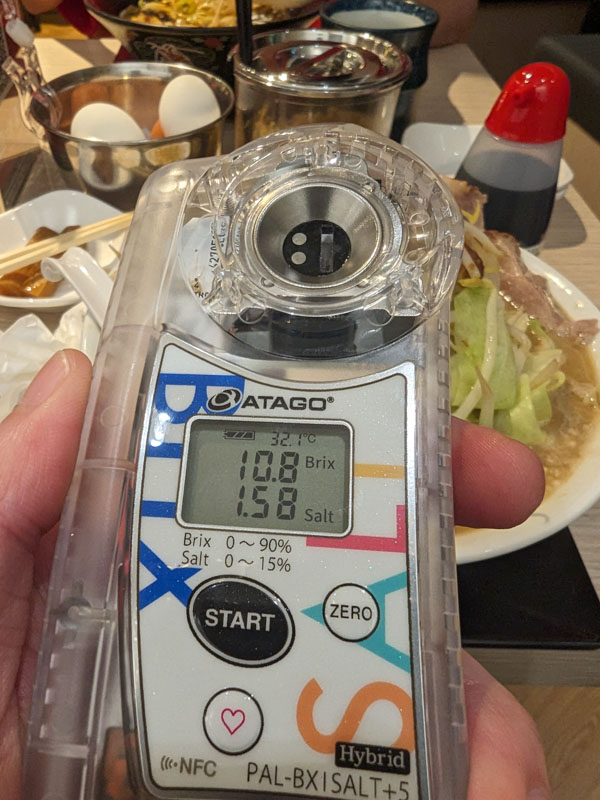
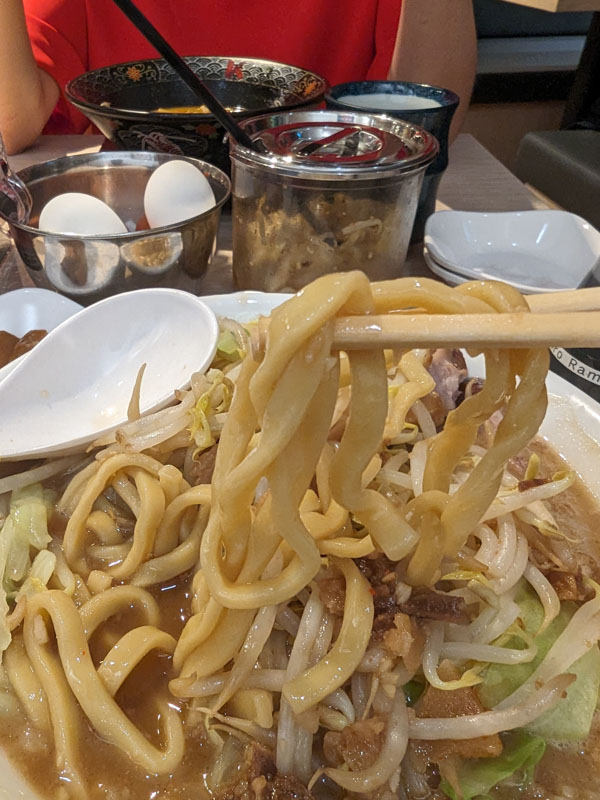
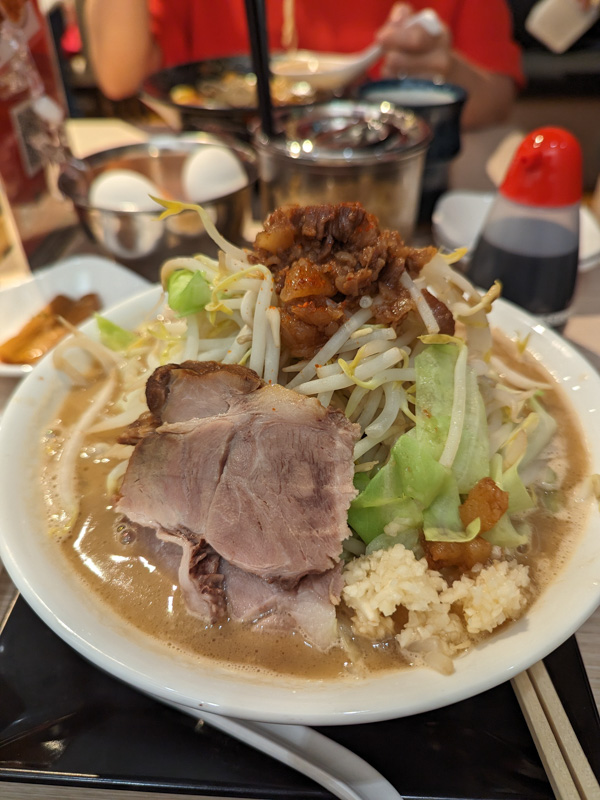
JIRO RAMEN 60/100 points
If you’re not familiar with Jiro-style ramen, prepare yourself for a truly indulgent experience. This ramen combination is a sinful delight, featuring a salty blend of shoyu and tonkotsu broth that takes saltiness to new heights. Thick, dense noodles demand your attention with each chew, while hefty chunks of chashu and a mountain of toppings ensure a satisfying feast. While Jiro-style ramen may not be the most common find in Singapore, it’s gaining popularity on our sunny island, and for good reason.
Noodle – 25/35
The noodles in Jiro-style ramen are a force to be reckoned with. Thick, dense, and chewy, they resemble the texture typically found in Tsukemen, or dipping ramen. Each bite offers a substantial and satisfying feel, but be prepared for a lot of chewing. Taste-wise, they carry a subtle wheat flavor, and the balance of kansui taste is well executed.
Soup – 25/35
The broth in Jiro-style ramen takes you on a flavor journey. It begins with a sweet head reminiscent of miso ramen, followed by a sharper shoyu aftertaste and a delightful garlicky aroma. While the garlic taste could have been stronger, I must note that I ordered the regular portion of raw garlic. Next time, I’ll be sure to try it with extra garlic for an even bolder experience. The brix rating also shows the richness of the Tonkotsu base, coming in at a high 10.8.
Meat – 5/20
When it comes to the pork in Jiro-style ramen, expect a hefty and tender slice. However, the taste leans towards being rather porky, and the marination doesn’t quite achieve a well-balanced flavor profile.
Toppings – 5/10
Jiro-style ramen boasts an abundance of crunchy beansprouts and cabbage among its toppings. While they offer a pleasant texture, they pale in comparison to the marinated beansprouts, which are also generously provided free of charge. The other topping includes a pile of marinated fatty minced meat which adds a nice savoury dimension to the meal.
In summary, this Jiro-style ramen presents an indulgent and unique ramen experience. The thick, chewy noodles add a substantial element to the dish, while the rich and complex broth tantalizes the taste buds with its sweet, shoyu, and garlicky flavors. The pork, although tender, leans heavily towards a porky taste, and the toppings provide a satisfying crunch, though the marinated beansprouts steal the show. Embrace the sinful pleasure of Jiro-style ramen and discover why it’s gaining popularity on our sunny island.



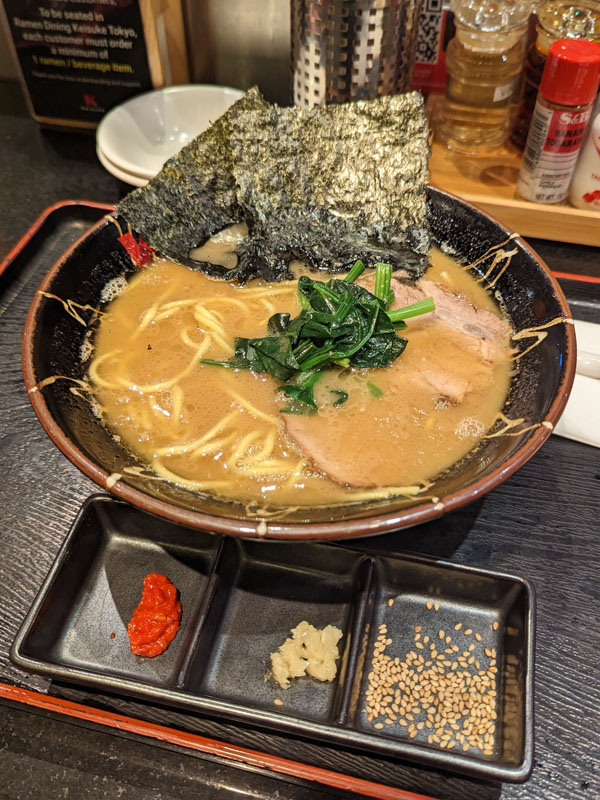
IEKEI RAMEN 75/100 points
Noodle 20/35
My first reaction.. yellow Chinese egg noodles!?
Pretty similar I guess since the origin of IEKEI noodle is an adaptation of the Chinese la mian.
Texture wise, it doesn’t have the bite of your regular Hakata Tonkosu noodle where your noodles snap apart from your bite, nor that springiness of your curly Sapporo Miso type noodles that keeps you chewing. But what you get is quite unique from those you normal have. It’s firm and springly but not exactly chewy. Has a slightly more doughy texture overall. The length of the noodles are also cut to medium length like our homegrown katong laksa. Slurps pretty well in this very rich soup.
Taste wise, while it looks suspiciously like what you find in your average fishball noodles, they don’t take like one. There’s no noticeable alkaline taste or yellow noodle taste. The noodles have a nice fullest to it.
Broth 25/35
The story about IEKEI is something to Google about – a truck driver turn ramen master is my TLDR version for you. The broth is a mixture of Shoyu and Tonkotsu, marrying the best of 2 most popular ramen during it’s time.
The soup had a strong Shoyu start, the savoury note of aged Shoyu followed by the rich umaminess of Tonkotsu, finally ending with a subtle sweetness of the pork broth.
For those that doesn’t have a heavy palette, this might be an overkill for you.
Meat 20/20
The thinly sliced chashu is soft and tender. Marination is alot more well done and balanced. The chashu is more evenly marinated from inside out this time round.
Toppings 10/10
Tamago is as usual but the beauty of IEKEI ramen is how concept of ajihen is part of the meal experience – read below about ajihen.
“Some believe the concept of ajihen (味変), or flavor change, became widely popular in ramen thanks to Iekei shops, simply due to the sheer amount of seasonings provided at the table. The idea of ajihen is to subtly change the flavor profile of the ramen throughout the course of the meal, so that your bowl remains an evolving eating experience until you’ve finished the last drop of soup. Longtime eaters acquire their own skills and styles of ajihen.”
The meal comes with some spinachand a tray of the follow toppings given separately:
– Garlic
– Chili paste / nice subtle burn in the throat / scent of Sichuan pepper?
– Sesame
The raw garlic adds a nice aroma and punch to the meal while the chilli paste gives a subtle slow burn in the throat, and the sesame adds an overall nuttiness to the meal.
My sequence to ajihen was sesame first, raw garlic middle and a small portion of chilli paste towards the end. When I finished all the noodles, I start adding in the complimentary marinated beansprouts to the remaining soup to finish it off.
DISCLAIMER
One man’s meat is another man’s poison.
Find out more about our palettes and how we evaluate our ramen here. 😉


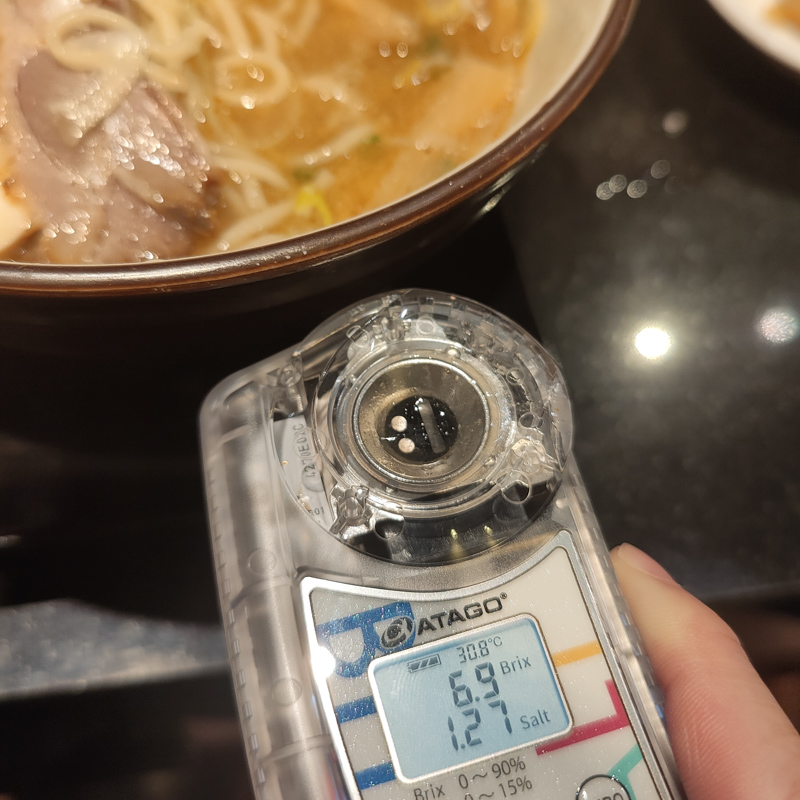
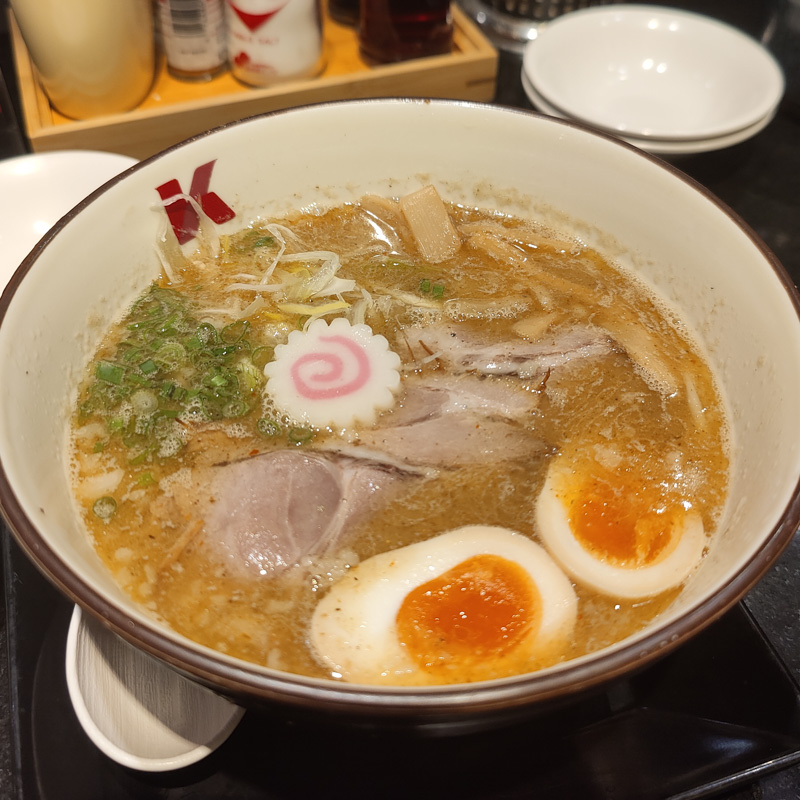
NIBOSHI RAMEN 80/100
Noodle – 25/35
Noodles used are medium thick, wavy and slightly on the chewy side. Overall smooth and slurps very well with the broth. Bite wise is firm but not exactly al dente. Overall the noodles held up well in the soup without any sogginess despite sitting in there towards the end. However, the taste was nothing really distinctive or memorable.
Soup – 30/35
Niboshi ramen is a cloudy soup made of dried fish stock (normally anchovy) and comes with a punchy fishy taste. But don’t think of fishy in a bad way like how we describe stale fish and pungent smells from fish markets. The soup has a sweet umami start and ends off with punchy notes of savoury fish. There’s also hints of some spices in there that gives a little kick at the very end.
On my refractometer, it shows a reading of 6.9 brix which explains the slightly dense mouthfeel. Compared to the other dashi or fish-based clear soup, this is definitely heavier in taste.
Note: You can read what this refractometer reading is about here.
Meat – 15/20
The chashu in our latest visit is thinner than before but also much more tender and the residue porky taste we experience in the past seems to be gone. The marination also seems more flavourful despite the thinner cut. Overall a noticeable improvement and well-balanced.
Toppings – 10/10
Eggs nicely done and leaves a savoury after-taste but not too salty. The toppings in the dish didn’t made much difference but as usual, the complimentary marinated beansprouts pairs well.
For those that frequent ramen joints in Japan will know that it’s typical to find a couple of marinated side dishes by your table. They not only go well with the ramen but if you add them directly into the broth, they change your experience by turning it into a different broth. In this case, it’s best to add them into your broth about 1/2 way through your meal.
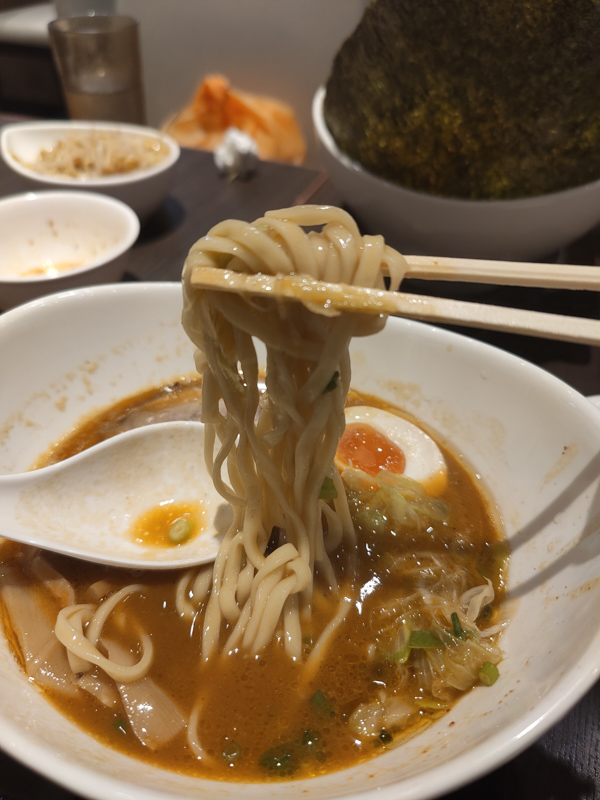





CRAB STOCK RAMEN 95/100
Noodle – 35/35
The noodles used in this ramen is very different from most. It’s thick and a little flat on the side – similar to what many Singaporeans refer to as ‘mee pok’. What we like about the noodles is how it manages to stay firm and hold it’s shape even towards the end of your meal. The bite of the noodles are also quite good and the ability to customise noodle hardness is a welcomed option.
Soup – 35/35
If you have been to Keisuke Kani King, you will wonder what’s the difference? It is VERY different. The ‘Crab ramen’ at Keisuke Tokyo Ramen Dining existed long before the inception of the Kani King outlet (sadly now its closed). It was when Keisuke Tokyo Ramen Dining was still at Millenia Walk and when Nansuttei was just round the corner on the same floor along with a bunch of other Japanese restaurants.
So enough history – what so special about this particular crab ramen? The broth is a lot richer and the ‘crabiness’, if there’s such a word makes you wonder how many crabs did they use to cook the broth. In fact ‘rich’ is an understatement with the almost bisque-like consistency. And if memory serves me well, they used to serve it with ginger as it helps to water down the thick and starch-like consistency. There’s a lot of love about this broth unless you don’t like crabs.
We revisted on 15 Sep 2022 to take a refractometer reading just to see how rich it really is. Brix 9.8 is about as rich as the classic Tonkotsu broth – do note that many “Tonkotsu” in Singapore is rather thin and watered down compared to what it should be.
When ordering, you’ll also be given an order form where you can customise your ramen, such as noodle hardness, amount of oil and taste of the soup. We also tried measuring the difference between the “strong” and “normal” taste and it seems like the difference is mostly in its saltiness.
Note: You can read what this refractometer reading is about here.
Meat – 15/20
In our previous visit, the meat was a little tough but in our revisit recently, it seems to be much more tender and the taste is also nicer. The marination seems a bit more pronounced which is good as the broth itself is quite strong in taste.
Toppings – 10/10
Nicely done and leaves a savoury after-taste but not too salty. Again, this is one of the highlights for me when I visit Keisuke – the complimentary marinated beansprouts. In fact sometimes I make my decision based on just this because it’s so good that you won’t have enough of it. If only they are selling it.
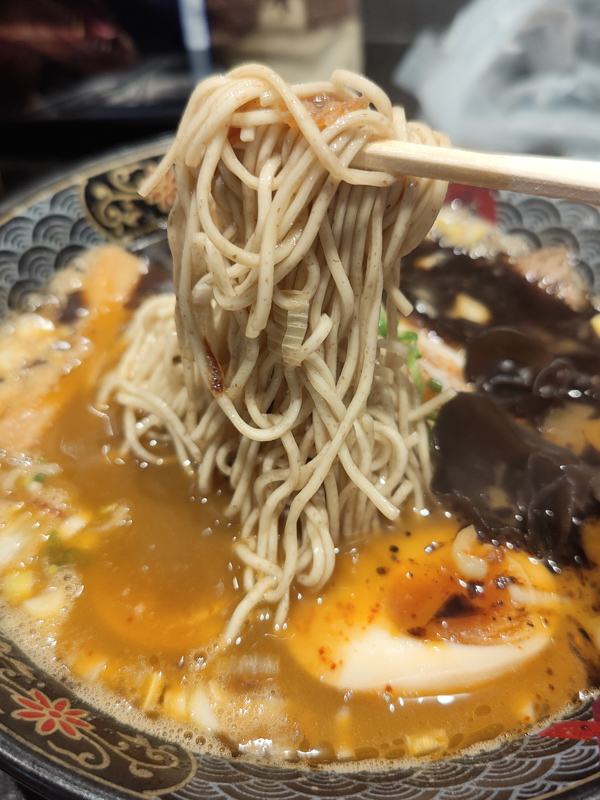
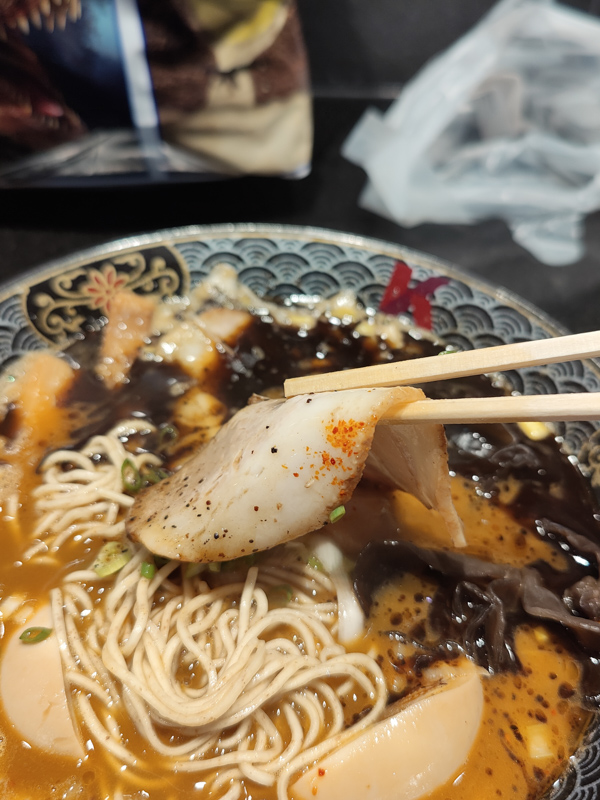
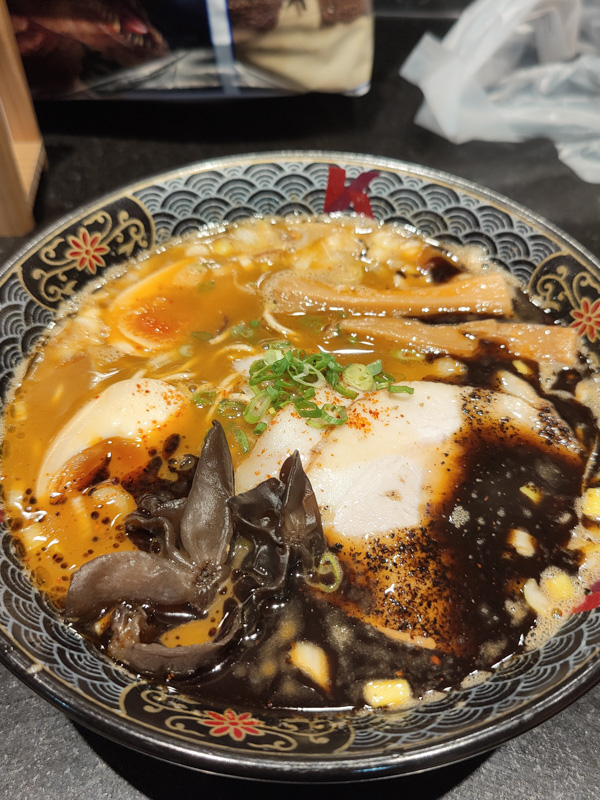
BLACK SPICY LOBSTER BROTH RAMEN 70/100
Noodle – 25/35
The noodles are thin with a very slight wave. Held well in the broth but the bite could be a little firmer.
Soup – 25/35
The spicy part is real, comes with a kick and its the choking type. The underlying broth tasted similar to the non-spicy version so it should be the black garlic oil that made the difference. The spiciness could be a little toned down as its overwhelming the rest of the stuff. But I must say… there’s a very nice lingering aroma after you get past the spiciness.
Meat – 10/20
Same as the other outlets we visited. Could be better if the chashu was a little more tender. Overall nothing really memorable about it. But it does have the right kind of thickness for its texture.
Toppings – 10/10
Nicely done and leaves a savoury after-taste but not too salty. Same as all the Keisuke Ramen chains – this is where the sidekick becomes one of the highlights.
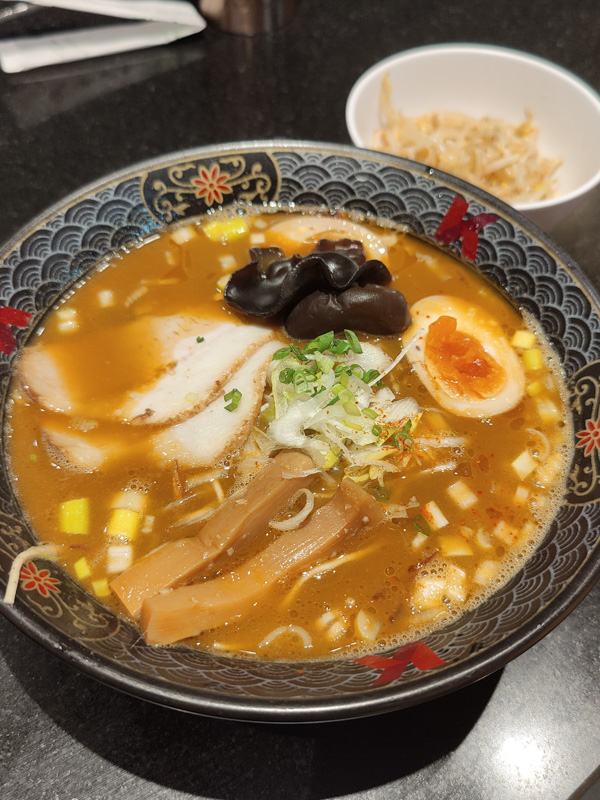
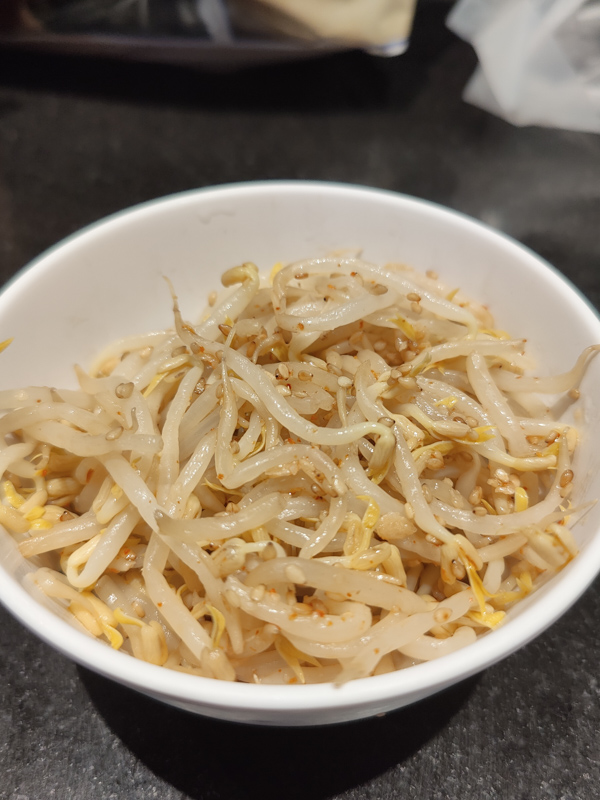

LOBSTER BROTH RAMEN 70/100
Noodle – 25/35
Same as the black spicy version. The noodles are thin with a very slight wave. Held well in the broth but the bite could be a little firmer.
Soup – 25/35
First impression – you might think it tasted a little ‘prawny’ but its slightly sweeter without any “prawn brains” taste. If you’ve tried an amateur prawn bisque, that’s the kind of prawn brain taste Im talking about. Overall, it’s umami rich and worth slurping down to the last drop – high brix reading of 11.3. However towards the very end the taste can start to feel a little too flat. Maybe this is where the spicy version could have shined if the spiciness was a little more balanced.
Meat – 10/20
Same as the other outlets we visited. Could be better if the chashu was a little more tender. Overall nothing really memorable about it. But it does have the right kind of thickness for its texture.
Toppings – 10/10
Nicely done and leaves a savoury after-taste but not too salty. Same as all the Keisuke Ramen chains – this is where the sidekick becomes one of the highlights.
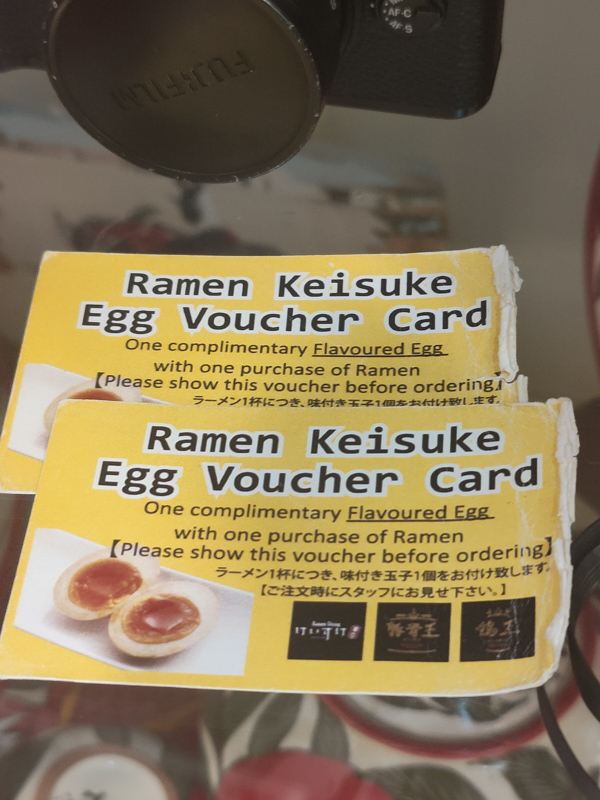

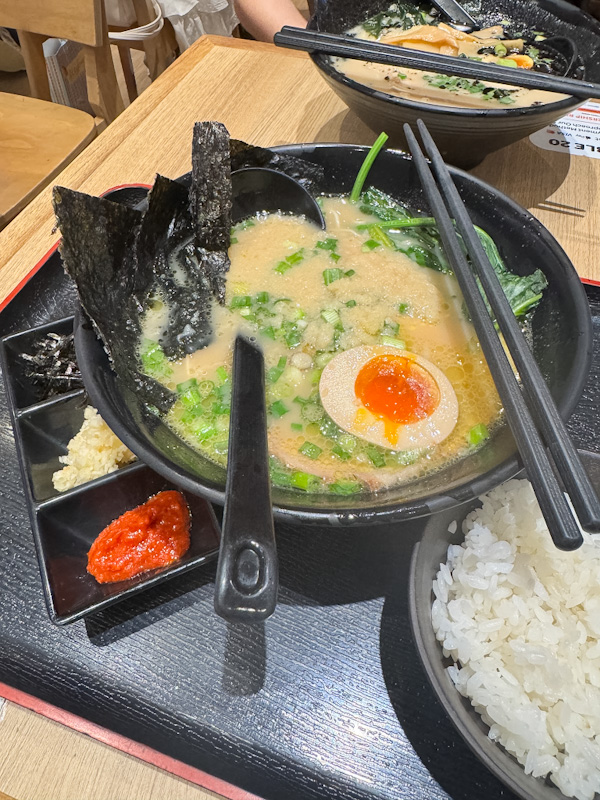
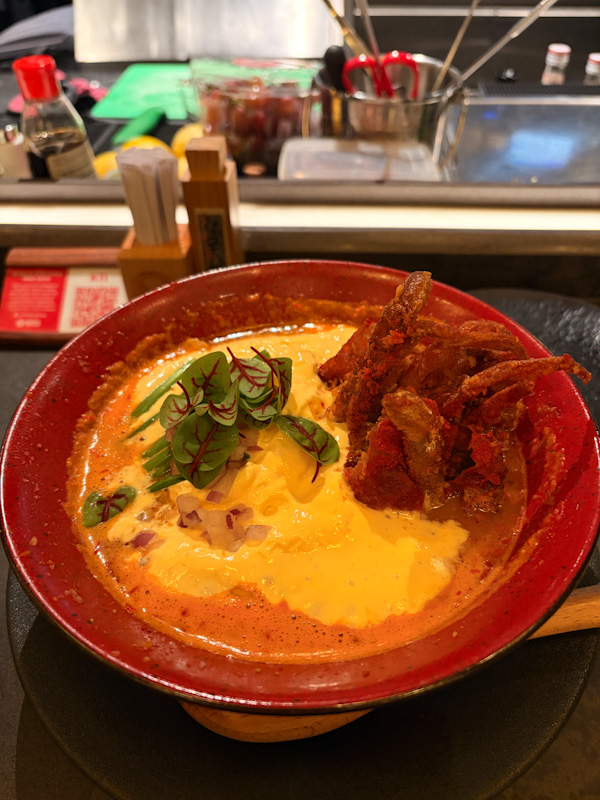
Pingback: Top 17 Best Ramen in Singapore 2023: A Comprehensive Review of Over 100 Bowls